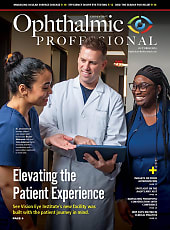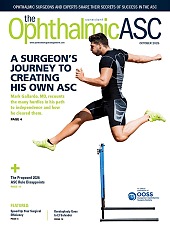THE INTREPID EYE SOCIETY IS A GROUP OF EMERGING THOUGHT LEADERS IN OPTOMETRY FROM ACROSS THE UNITED STATES. We asked the members to give us some tips on ways to think about Vuity, as we begin to find the best ways to help our patients. Personally, I’m really liking using Vuity in combination with the NanoDropper for early presbyopes who are experiencing adverse events. It seems to reduce adverse events and still gives plenty of miosis.
Patients need to use it more than one time if they get a headache. Patients that do experience a headache (15%) only experience it for one 1 day.


—Justin Schweitzer, OD
Choose the right patient and set proper expectations: A mild-moderate patient is ideal! See the classification consensus at https://pubmed.ncbi.nlm.nih.gov/34709607/ .
Have the patient utilize the drops for 7-10 days everyday initially (just like we do for progressive lenses or monofocal contact lenses). I have found this helps patients—if they have hyperemia, myopic shift, dimming, or headache—to get through that, as all improve with use in my experience. Tell patients that this could happen, so they aren’t surprised!


—Selina McGee, OD
Underpromise and overdeliver: education helps to reduce reliance on reading glasses and gives patients the option of drop or glasses.

—Mark E. Schaeffer, OD
Discuss and offer Vuity to all patients since all presbyopes have symptoms that affect their quality of life.


—Melissa Barnett, OD
Try off-label use of Vuity to try and get pupil constriction to cut down on nighttime glare and halos in diffractive intraocular lens (IOL) cataract patients. This is mostly for older versions of monofocal IOLs.


—Mitch Ibach, OD
Try daily use for the first 7 days, as neuroadaptation and side effects get better with use.


—Josh Johnston, OD
Warn younger patients 40-50 years old about the “dimming effects” of Vuity.


—Vin Dang, OD
In my experience, the key to compliance and overall success is being upfront about the potential side effects that may be experienced (including brow ache, dimming effect, and distance blur).



—Jade Coats, OD
The FDA indication is “treatment of presbyopia in adults.” This broad indication applies to approximately 128 million people in the United States.


—Damon Dierker, OD
Experiment by trying the drops at home and at various times during the day to best avoid adverse events such as dimming and myopic shifts that may be a benefit in some situations and a detriment in others.

—John Gelles, OD








